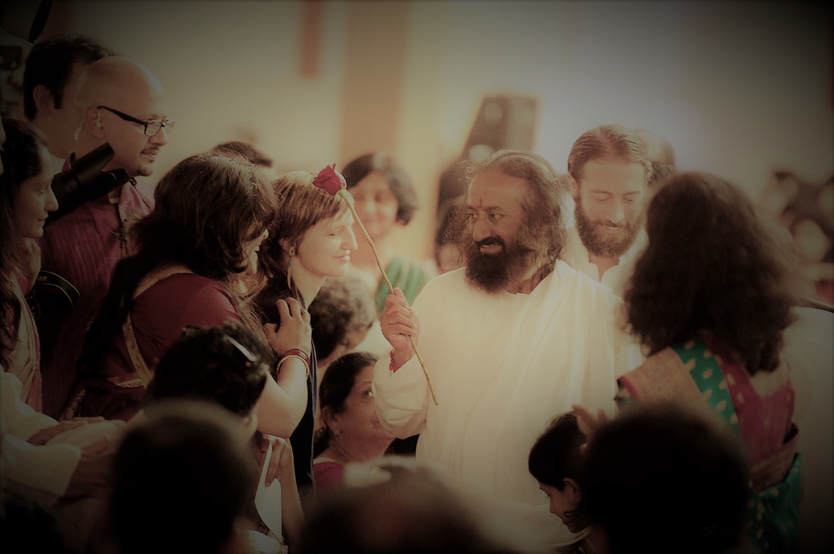|
7/17/2017 2 Comments The Art Of LonelinessOn top of a quartz mountain, in the middle of nowhere Appalachia, was where I learned how to be alone. Living on a yogic ashram was a rich, informative, and experiential journey into a culture, a system of beliefs, and a way of life that I did not appreciate fully until after I had left. Although I never aligned myself completely with the faith and beliefs of the ashram, simply being there in itself was enough to change my life forever.
In the winter of 2015, I accepted a full-time position as the lead therapist at the ashram, two hours away from my home in Asheville. I had already been commuting there once or twice a month, for almost a year prior, to work as an ayurvedic bodywork therapist and panchakarma technician for sporadic special events at the center. The promotion required myself and my daughter to relocate to Boone and to live on-site at the ashram. My intention was never to live there forever. I knew that it was a temporary decision that would help achieve very specific financial and professional goals in my life. Yet I never imagined how isolated, alone, and afraid that I would feel after moving to the top of that mountain. I gave my absolute best to my new job and to creating a sense of community with my co-workers at the ashram. Most of the ashram employees lived off-site, but there were a few of us who both lived and worked there. These were the individuals that I saw and interacted with most frequently. We worked together every day and saw each other in passing. We sat next to each other for lunch at the dining hall and attended yoga and meditation classes at the center together. Many of those individuals were devotees -- devoted followers of the the guru who founded the ashram. I never became a devotee personally, but I certainly gave a sincere, concerted effort to studying the teachings of the guru. Over the course of that year, I read a number of Guruji’s books, watched the first several hours of a video series commentary on the ancient Vedic text The Ashtavakra Gita, and listened to a few of his audio CDs. I attended meditation classes on Sunday mornings, which were partially guided by a recording of Guruji teaching his signature meditation techniques. I also sporadically attended satsang -- a practice similar to kirtan -- which included live music and devotional Sanskrit chanting. Both the meditation and satsang were followed by discussions, led by devotees, on the teachings of the guru. The guru also came to the center twice a year, and I always made time to sit and listen to him speak in my evenings even after putting in 10-12 hour days at work. But I never fully felt myself or at home at the ashram, no matter how diligently I studied the teachings, how often I made time to be social and friendly with the others living there, or how intentionally I tried to alter my lifestyle to mirror theirs. I often found myself alone in my ashram apartment, wishing for a deeper sense of connection with those around me and really, really missing my friends and community back home in Asheville. I spent more time alone in that ashram apartment than I have in any other comparable amount of time in my entire adult life. I filled this alone time with my studies in ayurveda, daily practices of yoga and meditation, eating a sattvic (yogic/vegetarian) diet, taking a daily regimen of ayurvedic herbs, and practicing daily dinacharya (yogic self-care practices such as tongue scraping, self-massage, etc.). I took better care of myself than I ever had in my entire life. Not to mention, I lived in a lush apartment, with gorgeous mountain views, and (on paper) had the best job of my entire career. So, why did I feel so miserable there? I did not fully realize the answer to this question until after moving back home to Asheville. However, I began to understand it a couple of months before leaving the ashram, while studying the teachings of Dr. Vasant Lad, the internationally renowned Ayurvedic Doctor and founder of The Ayurvedic Institute. I was reading about ayurvedic remedies for depression in several of his books that I own. I read about herbal remedies, such as dashmoola, tulsi, and brahmi. I read about oiling the head and the feet before bed with sesame oil. I read about specific yoga practices, such as sun salutations, that can benefit depression. I read that depression in itself can be related to either vata, pitta, or kapha (the three doshas or body types in ayurveda), and that the diet must be balanced within the individual first and foremost. Above all else, the teaching of Dr. Lad on depression that still sits with me is that “Psychologically, one factor that sustains vata depression is loneliness. Try to spend more time relating to people; it will help to lift the depression.” On my last day at the ashram, my ayurveda mentor at the center gifted a book to me that was written by the guru. Inside the front cover of the book she wrote, “Dearest Kymber, may God and Guruji bless you. Hope that you find a lot of answers in this book - I did.” I did not start reading this book until yesterday. One of my most favorite quotes of this book so far is this one: “Suppose you could have all the success in the world, even become the richest person or the most famous person, but have no love in life. Then life would not be a success. Life would appear to be barren. From every angle we come to the same point that all we aspire for in our life is love, a Divine love, a love that is ideal. The purpose in life is to flower and bloom in that ideal love.” My heart was longing to bloom. It was longing to bloom in love and connection with those around me. I was longing for a kind of connection that creates sparks when you look into someone’s eyes, or when you finish the other person’s sentence in mid-conversation. I was longing for the kind of intimacy that you feel when you share something vulnerable about yourself with close friends. I was longing for honesty and integrity, in the way that we can tell each other anything and everything, and trust it will never leave the room. I was longing for compassion and deep understanding, for a feeling that the person sitting next to me was listening to me without passing any judgment. I was longing so deeply for all of it. Yet I was also longing for something even deeper. My heart was longing for love and connection with myself. I wanted a deeper connection with my soul. I wanted to experience the “Divine love” that guruji speaks of in his teachings. The way to cultivate this connection is through meditation. It is through sitting still and simply listening to the dialogue within yourself. It is by accepting and understanding whatever comes up for you in this process no matter how difficult it may be. I wholeheartedly know and understand, from years of personal meditation practice, that it certainly comes with its fair share of discomfort. The practice is truly worth the many fruits of life that it brings. I know now that the discomfort I felt with being alone was only a reflection of the discomfort that I felt within myself. Yet I needed to be alone in order to experience this stillness and connection within myself. I needed to be alone so that I could sit and listen to what my spirit required in order to feel nourished, supported, and whole. The few of those living at the ashram who befriended me during that time will live within my heart always. Their presence and support during such an intensely isolated time of my life means more to me than I know how to describe. While those friendships may no longer be a part of my life, or are perhaps more distant than they once were, the depth and meaning they gave to that experience is infinite. I am eternally grateful to all of you. You know who you are. The art of loneliness is knowing how to value its presence. It is knowing how to honor loneliness as intentional time and space for self-inquiry. It is the art of balancing the sacred, personal space with the sacred, interpersonal connections with others. Lately, I have been craving this kind of loneliness now more than ever.
2 Comments
Sheila Wenzel
7/19/2017 12:27:31 pm
Amazing story. thank you for sharing your most intimate thoughts. You are amazing and I am so happy you're in my life.
Reply
7/19/2017 12:30:10 pm
Such a heartfelt expression of the experience of loneliness shared with the heart's clarity, honesty and insight. It will be a guiding light to others!
Reply
Your comment will be posted after it is approved.
Leave a Reply. |

 RSS Feed
RSS Feed
